The clavicle, which is also known as the collarbone, is one of the most commonly broken bones among people of all age groups. The majority of clavicle fractures are treated without surgery, but a subset of fracture patterns are best addressed surgically to maximize healing and chances of full return to desired activities.
General
- Clavicle fractures make up 5-10% of all broken bones
- Usually result from direct blow onto the shoulder
- Healing takes longer if you smoke or have diabetes
Anatomy
- Clavicle is located between the chest bone (sternum) and the shoulder blade (scapula). It essentially connects the arm to the rest of the body.
- Many important nerves and blood vessels sit directly below the clavicle.
- When the clavicle breaks it usually does so in the middle portion (80-85%), but can also break more toward the outside (lateral) or inside (medial).
Risk Factors
- Young age
- Contact sports
Symptoms
- Pain
- Inability to move your arm
- Sagging shoulder (down and forward)
- Painful click or sense that bones are rubbing against each other
- Deformity or “bump”
- Bruising, swelling, and/or tenderness over the collarbone
Diagnosis
- Physical examination
- Areas that reproduce pain
- Amount of deformity assessment of the overlying skin – cases where the bone threatening the skin causing “tenting” of it, or where the bone has pierced the skin require an operation.
- Assessment of your nerves and blood vessels
- X-rays look at the bony alignment and fracture pattern in the injured shoulder and also X-rays of the uninjured shoulder for comparison.
- CT scan may be useful in some cases to evaluate the fracture pattern if Dr. Taylor is considering surgical care
Treatment
- Non Surgical – The vast majority of patients get better without surgery. You will have to follow up with Dr. Taylor on several occasions so that he can check your X-rays and confirm that it is healing appropriately. In some cases the bone heals in an improper alignment, called a “malunion”, or does not heal at all, called a “nonunion” (1-5%). If this happens and its symptoms are troublesome surgery may be an option.
- Sling and Arm Support for a period of time to be determined by Dr. Taylor.
- Pain Medication such as Tylenol may be taken as needed. Depending the injury, Dr. Taylor may suggest additional medications.
- Physical Therapy is an important tool to help you strengthen and retrain the muscles that support the shoulder after the bone has healed sufficiently.
- Follow-up visits: you will have to come back 2 weeks after your first visit for repeat X-rays to confirm fracture alignment and the start of healing. You will have to come back 6 weeks after your first visit again for X-rays.
- Surgery is used in a small subset of patients with significant shortening and displacement, or those with persistent symptoms. For these patients, surgery results in improved functional outcome, less pain with overhead activities, faster healing, decreased rates of symptomatic nonunions and malunions, increased shoulder strength and endurance.
- Open Reduction Internal Fixation (ORIF) – In order to fix the collarbone, Dr. Taylor will make an incision in skin (open), put the bones back in their proper alignment (reduction), and hold the bones together using plates and screws (internal fixation). If the plate and screws causes symptoms in the future (~30% of patients), they can be removed after the bone has healed. If they do not bother you, they can stay in forever.
- Physical therapy is an important part of the healing process. Specific exercises will help restore movement and strengthen your shoulder.


